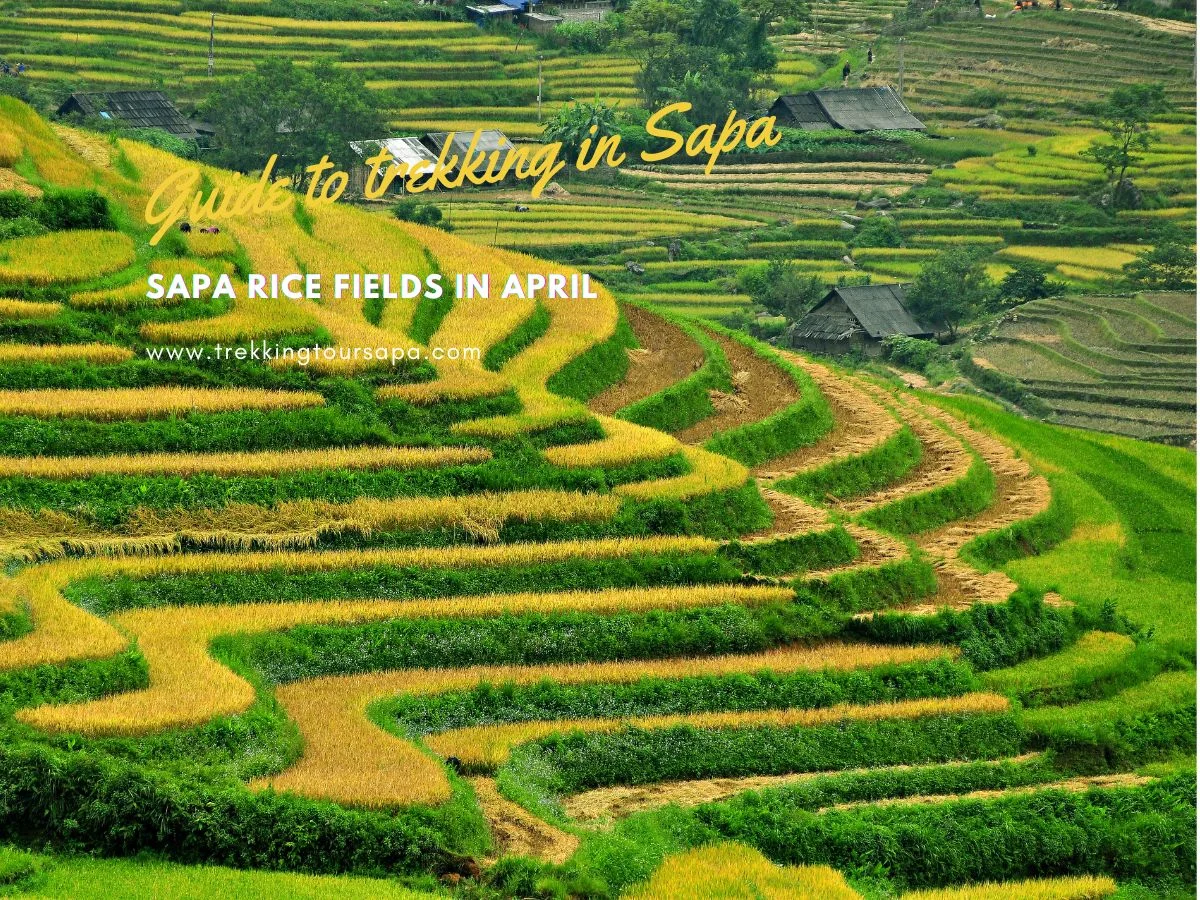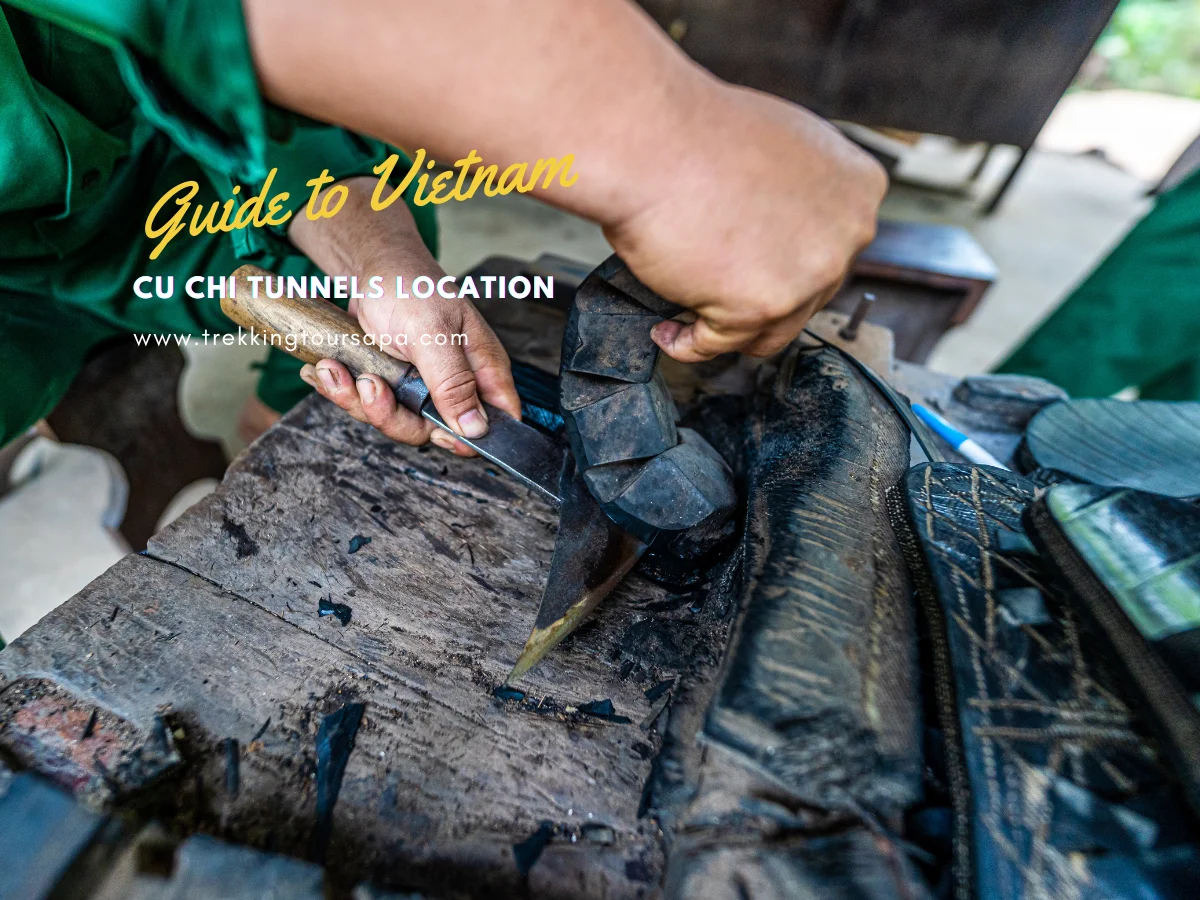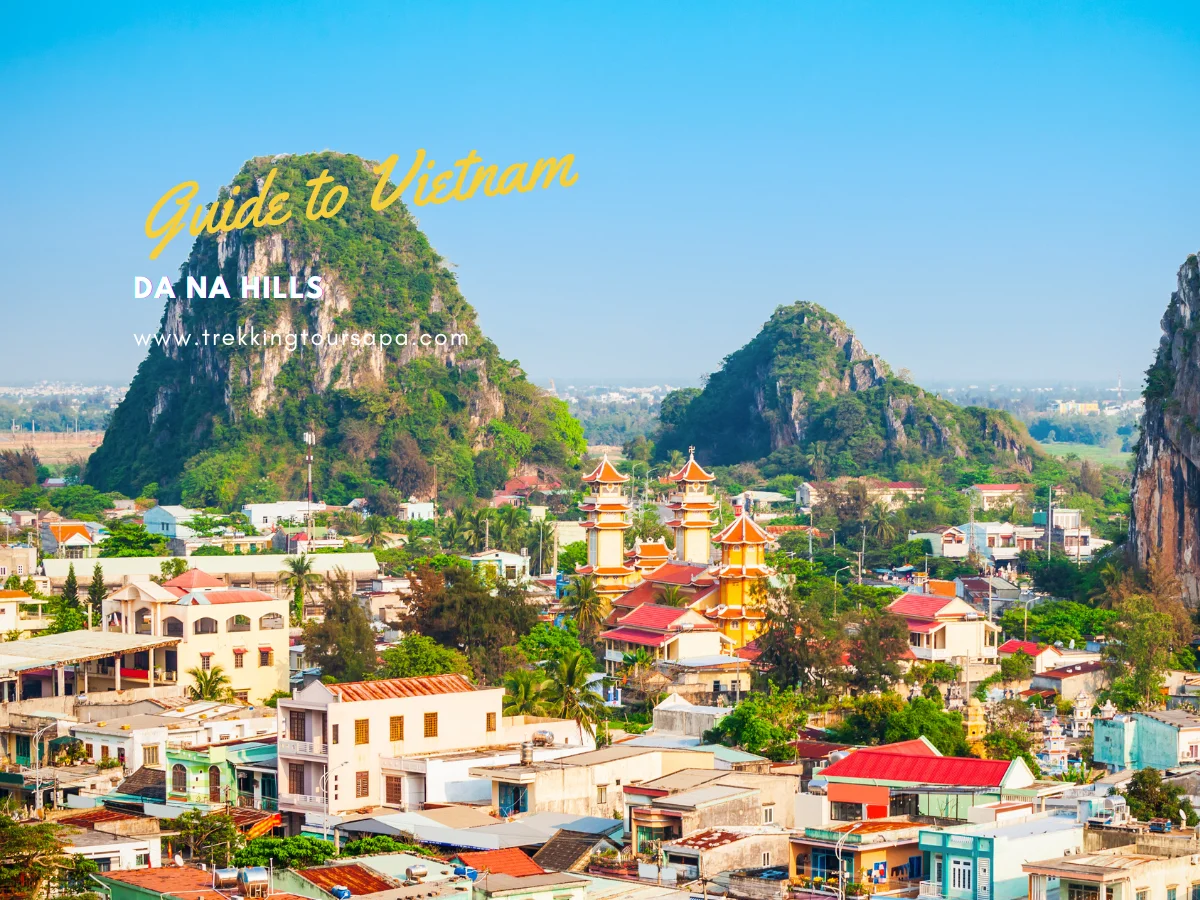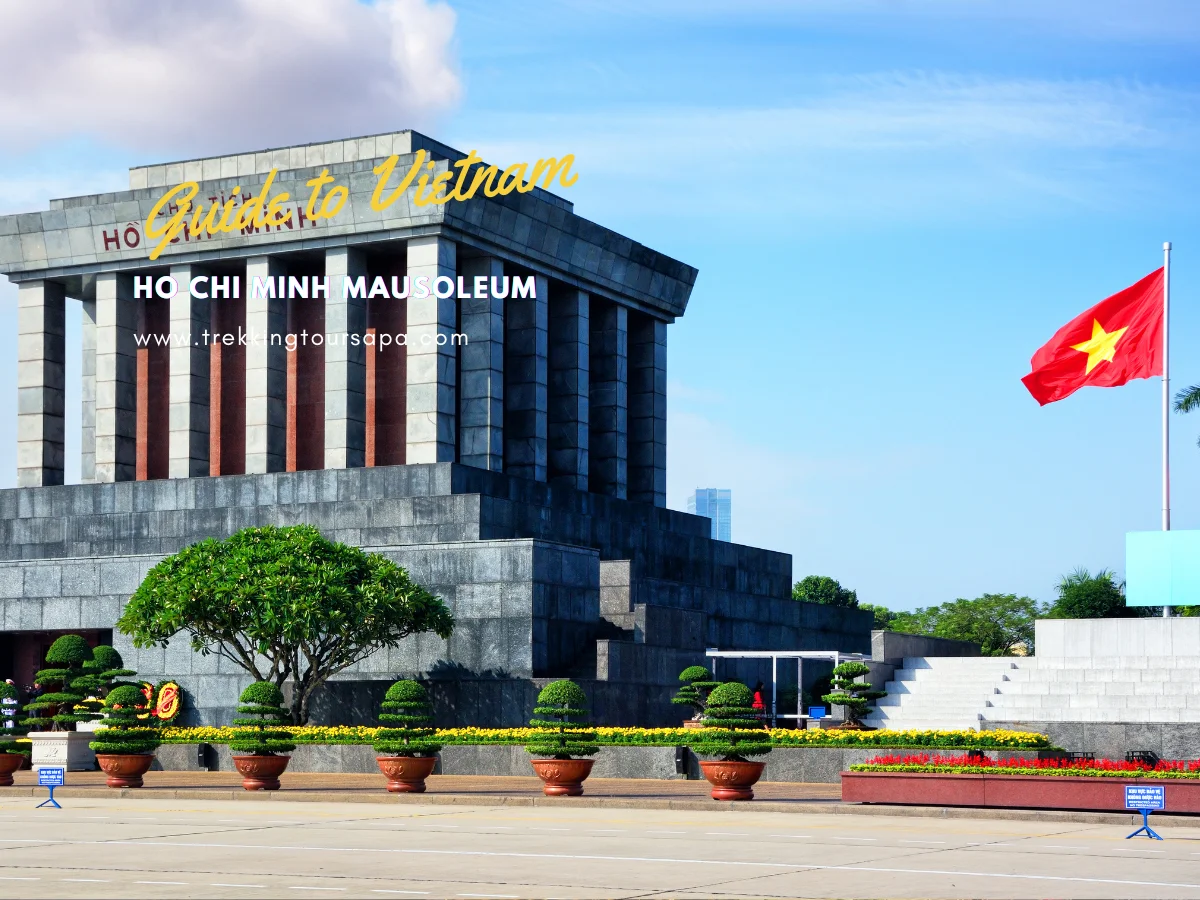You’re looking for a way to escape the hustle and bustle of city life, and there’s no better place to do it than in the Sapa rice fields in April. Did you know that these terraced fields cover over 2,200 hectares of land? That’s an impressive statistic, but what makes these fields truly remarkable is their stunning beauty.
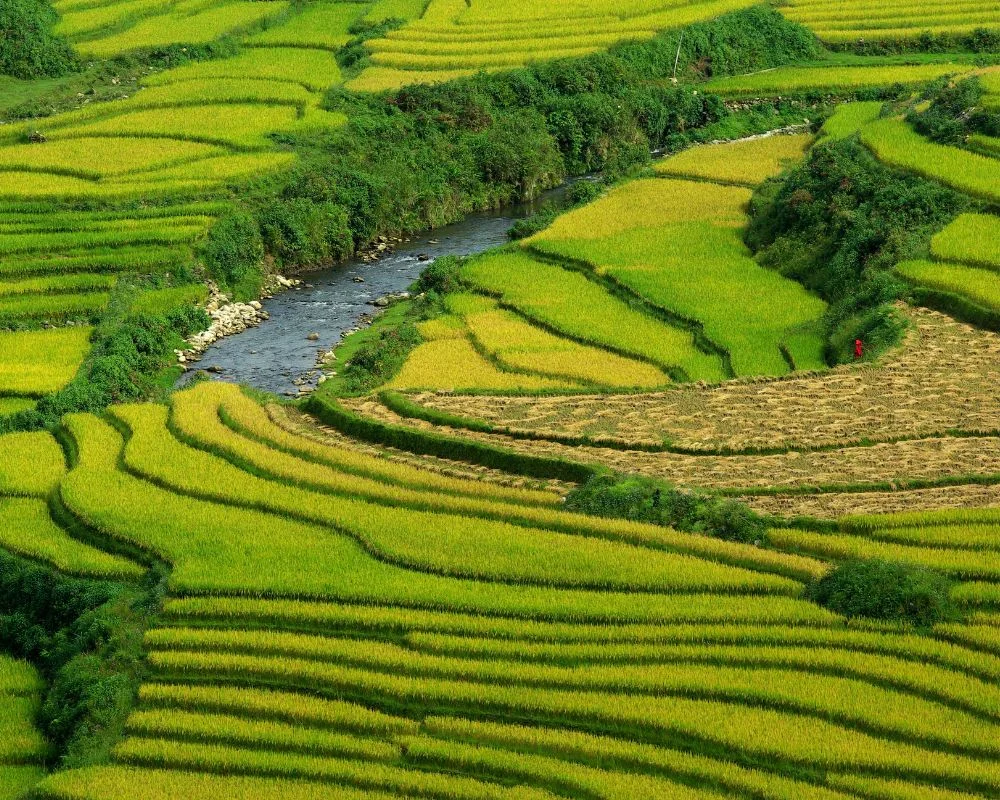
As you make your way through the winding paths of the rice fields, you’ll be surrounded by breathtaking views of lush greenery and misty mountains. The cool April weather provides the perfect temperature for hiking through the terraces and exploring local culture. But don’t forget your camera – this is also a prime photography opportunity to capture the vibrant colors and unique patterns of the rice paddies. Whether you’re traveling solo or with friends and family, a visit to Sapa rice fields in April offers a peaceful escape from everyday life.
Table of Contents
ToggleThe Beauty of Sapa Rice Fields
You can’t help but be mesmerized by the stunning natural scenery that surrounds you during this time of year in Sapa. The rice fields, a renowned natural wonder in Vietnam, are at their most vibrant and picturesque state in April. As far as your eyes can see, there are rolling hills adorned with terraced rice paddies that glisten under the warm sun. It’s a sight to behold, one that leaves you speechless and grateful for the opportunity to witness such beauty.
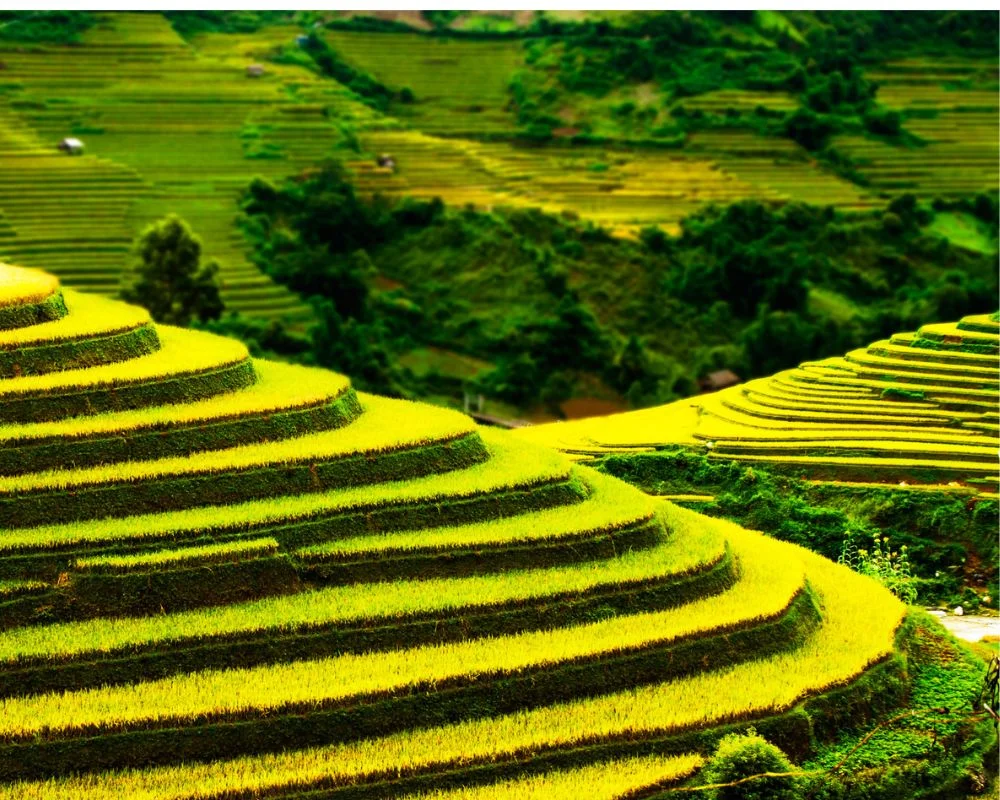
What makes these rice fields even more special is the environmental preservation efforts that have been implemented in recent years. The local government has taken steps to ensure sustainable farming practices in order to maintain the natural beauty of this area for generations to come. As you stroll through the fields, take a moment to appreciate not just its breathtaking appearance but also its importance as an eco-friendly attraction. And while exploring local culture is another must-do activity in Sapa, it’s hard not to feel connected with nature when surrounded by such awe-inspiring landscapes.
Sapa 1 Day Tours
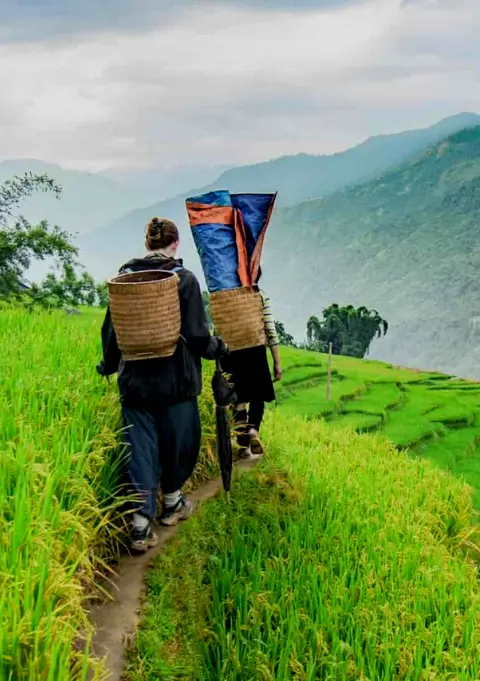
- 1 day experience
- Moderate to challenging
- Cultural immersion & active adventure
- Rice fields, valleys & villages
- Private tours
- Vegan-friendly
Sapa 2 Day Tours
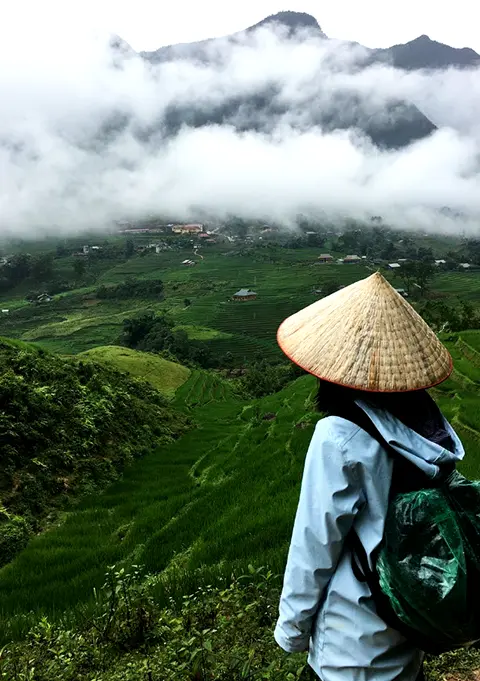
- 2 days 1 night experience
- Moderate to challenging
- Cultural immersion & active adventure
- Mountains, valleys, rice fields and villages
- Private tours
- Vegan-friendly
Sapa 3 Day Tours
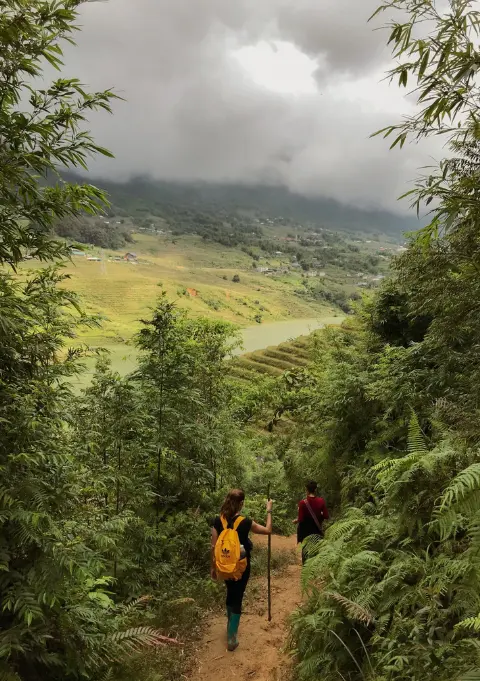
- 3 days 2 night experience
- Moderate to challenging
- Cultural immersion & active adventure
- Mountains, valley, rice fields & villages
- Private tours
- Vegan-friendly
Sapa 4 Day Tours
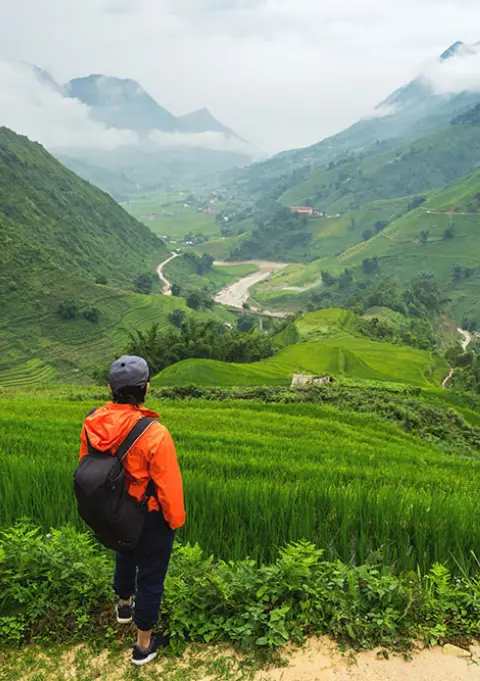
- 4 days 3 night experience
- Moderate to challenging
- Cultural immersion & active adventure
- Mountains, valleys, rice fields & villages
- Private tours – Less Touristic
- Vegan-friendly
Exploring Local Culture
As you explore the local culture in Sapa, you’ll notice how friendly the locals are. They take great pride in tending to their crops and leading water buffalo through the rice fields. You’ll be amazed at how these traditional practices have been passed down from generation to generation, and how they play an important role in shaping the community’s way of life.
Friendly Locals
The warm and welcoming locals make it easy to feel at home amidst the stunning scenery of this time of year. As you wander through the rice fields in April, you’ll encounter friendly faces eager to share their culture with you. These locals are deeply involved in their community, and they take pride in exchanging cultural traditions with visitors like yourself.

As you chat with the locals, you’ll learn about their daily routines and how they tend to their crops. They will eagerly show you the tools they use, such as wooden hoes and bamboo baskets. You may even get a chance to try your hand at planting rice alongside them! By fostering this cultural exchange, the locals create an environment that’s both educational and enjoyable for visitors. With these shared experiences under your belt, it’s easy to see why so many travelers come back year after year to experience Sapa‘s rice fields firsthand.
Tending to Crops
Get a glimpse into the daily routines of the locals as they tend to their crops with traditional tools and techniques. The sapa rice fields in April are bustling with activity as farmers work tirelessly to ensure a bountiful harvest. Crop rotation is an essential aspect of farming here, allowing the soil to replenish its nutrients naturally. Farmers typically grow rice for one season before switching to legumes or vegetables, which act as natural fertilizers.

Irrigation techniques also play a crucial role in crop cultivation. The locals use simple yet effective methods such as building small dams, channels, and canals that divert water from nearby streams and rivers into their fields. They have developed this system over generations and have perfected it to suit the unique terraced landscape of Sapa. As you watch them work, you can’t help but admire their dedication and expertise in nurturing mother nature’s gifts.
As these hardworking farmers tend to their crops day in and day out, they rely on leading water buffalo for support- but more on that later!
Leading Water Buffalo
Experience the heartwarming bond between farmers and their trusty water buffalo as they work together to plow the fields. In the sapa rice fields, leading water buffalo is a critical skill that every farmer must possess. With proper handling techniques, these gentle giants become efficient machines that help cultivate the land.

Buffalo racing traditions have been passed down from generation to generation in Sapa. Farmers train their animals for months, preparing them for races that showcase their speed and agility. These races are not only a source of entertainment but also an opportunity to demonstrate the farmers’ close relationship with their buffalos. As you watch them lead their buffalos through the fields, you’ll feel a sense of awe at how they seamlessly communicate with each other.
Markdown bullet point list:
- Farmers use simple wooden sticks to guide buffalos while plowing.
- Proper training ensures that buffalos do not get injured during races or fieldwork.
- Buffalos have an incredible memory and can recognize familiar faces and voices.
- Buffalo racing is a way for farmers to show off both their own skills and those of their loyal companions.
As you explore this beautiful landscape further, hiking through the terraces will bring you closer to nature than ever before.
Sapa 1 Day Tours

- 1 day experience
- Moderate to challenging
- Cultural immersion & active adventure
- Rice fields, valleys & villages
- Private tours
- Vegan-friendly
Sapa 2 Day Tours

- 2 days 1 night experience
- Moderate to challenging
- Cultural immersion & active adventure
- Mountains, valleys, rice fields and villages
- Private tours
- Vegan-friendly
Sapa 3 Day Tours

- 3 days 2 night experience
- Moderate to challenging
- Cultural immersion & active adventure
- Mountains, valley, rice fields & villages
- Private tours
- Vegan-friendly
Sapa 4 Day Tours

- 4 days 3 night experience
- Moderate to challenging
- Cultural immersion & active adventure
- Mountains, valleys, rice fields & villages
- Private tours – Less Touristic
- Vegan-friendly
Hiking through the Terraces
You’ll feel invigorated as you trek through the lush green terraces of Sapa rice fields in April. The scenic routes offer a variety of difficulties, from easy walks to more challenging climbs. No matter which trail you choose, you’ll be rewarded with stunning views of the surrounding landscape.

As you hike through the terraces, take in the intricate system of irrigation channels and marvel at the resourcefulness of the local farmers who have created this remarkable landscape over centuries. You’ll find yourself stopping frequently to snap photos or simply to take it all in. And if photography is your passion, then get ready for some incredible opportunities to capture moments that will stay with you forever. As we move on to the next section about photography opportunities, keep your camera at hand and be prepared for even more breathtaking sights.
Photography Opportunities
It’s not every day you can capture such stunning images, but with the photography opportunities in this section, you’ll have plenty of chances to flex your skills. The Sapa rice fields in April offer a plethora of compositions for capturing the perfect shot. From the terraced hillsides to the vibrant green crops, there is no shortage of subjects to photograph.
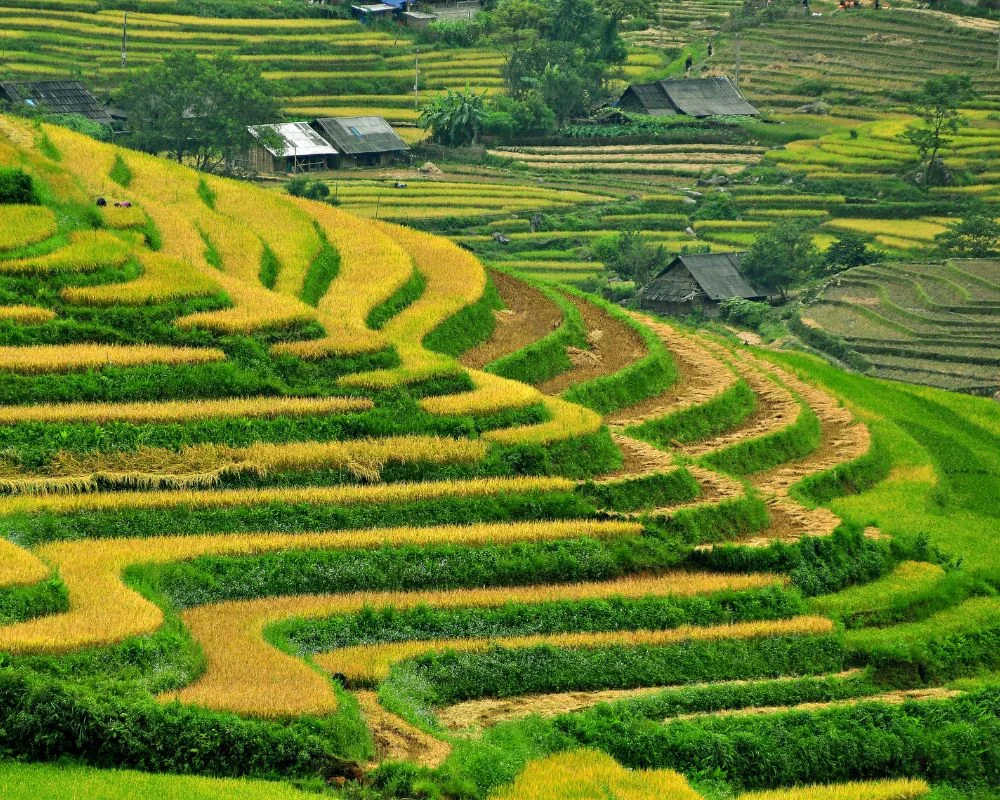
To make the most out of your photography experience, some composition tips are essential. Try using the rule of thirds and leading lines to guide the viewer’s eye through your image. Utilize foreground elements to add depth and create a sense of scale. As for gear recommendations, a wide-angle lens will do wonders in capturing as much of these expansive landscapes as possible. And don’t forget about filters to enhance colors or reduce glare on sunny days.
With all these tools at your disposal, you’re sure to come away with some incredible shots that capture both the beauty and serenity of this unique location. Speaking of serenity, let’s move onto how this destination offers a peaceful escape from city life without having to take any specific action.
Peaceful Escape from City Life
As you capture the perfect shot of the sapa rice fields in April, you can’t help but feel a sense of calm wash over you. The peace and tranquility that engulfs this place is unmatched, making it the perfect escape from the hustle and bustle of city life. Amidst all the greenery and natural beauty, you’ll find yourself feeling at ease with nature therapy.
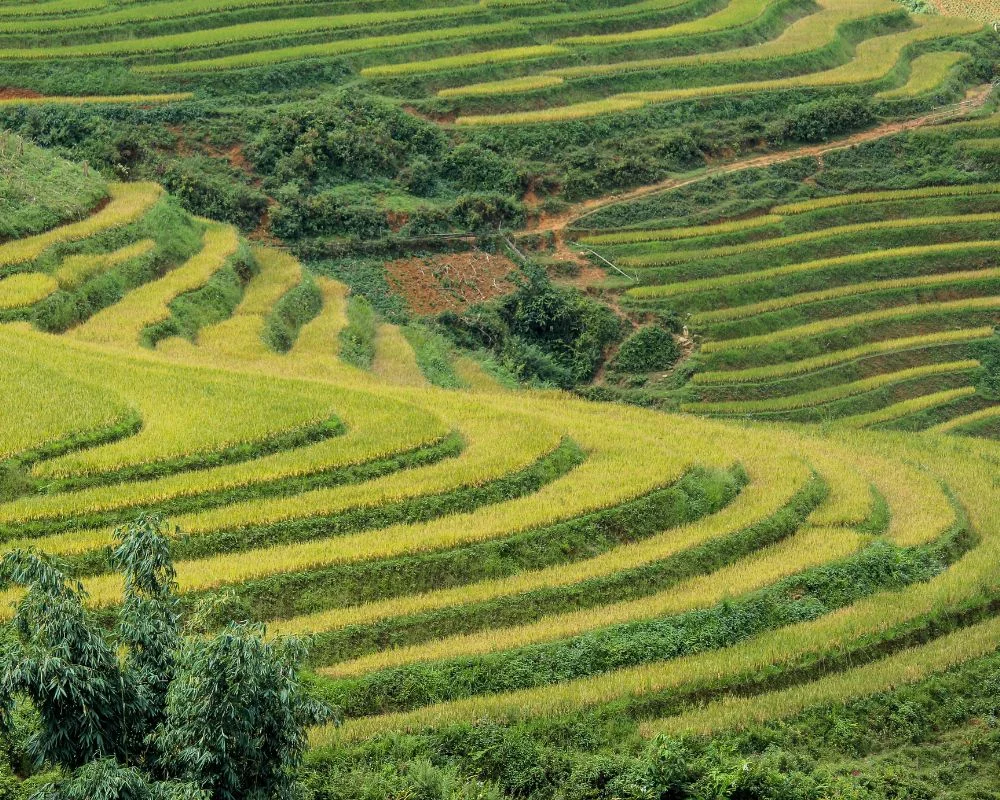
Sapa rice fields in April offer more than just photography opportunities. It’s an ideal location for mindfulness retreats where one can engage in activities like yoga or meditation amidst serene surroundings. As you take in all that this place has to offer, it’s easy to feel your worries melt away. Whether it’s taking a leisurely stroll through these stunning landscapes or simply sitting down and basking in their beauty, Sapa rice fields provide a peaceful respite from everyday life.
And speaking of everyday life, if you’re wondering when the best time to visit Sapa rice fields is, we’ve got you covered.
Best Time to Visit
If you’re looking to plan a rejuvenating getaway surrounded by nature, then make sure to learn about the best time to visit the stunning Sapa rice fields in April. The climate in this area is divided into two seasons: the dry season from October to March and the rainy season from April to September. Although it may seem counterintuitive, visiting during the rainy season can provide a unique experience as the fields are lush and green with fewer tourists around.
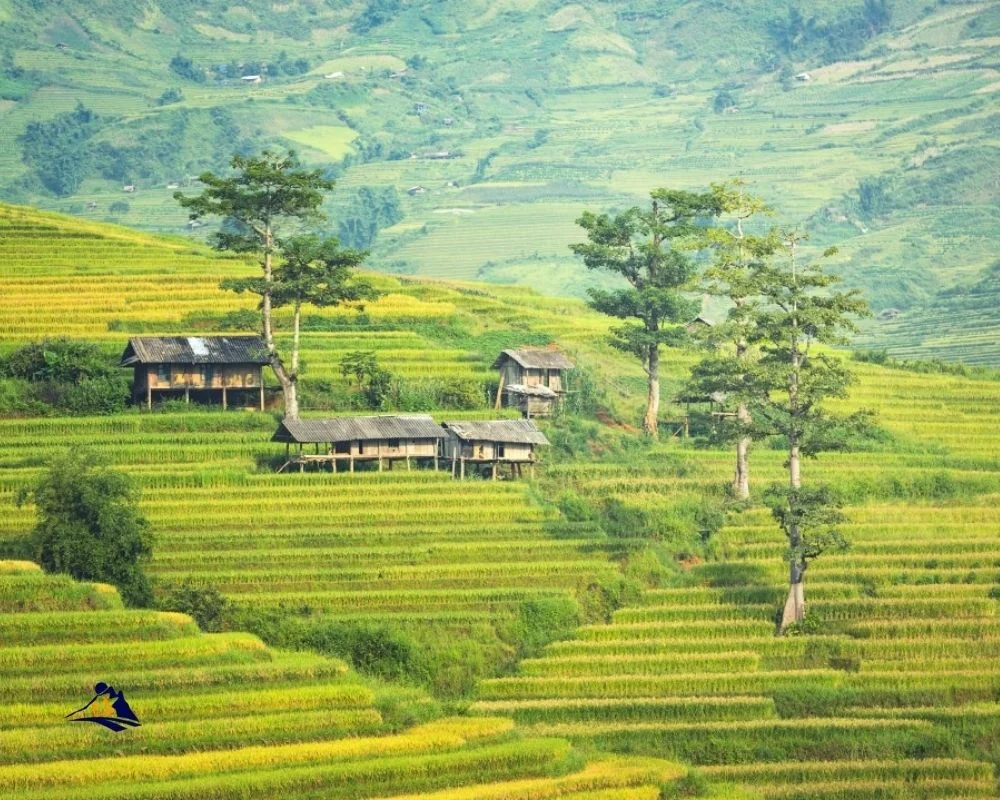
However, if you prefer drier weather and fewer crowds, then planning your trip during the dry season is highly recommended. While temperatures can drop below freezing at night (especially in December and January), daytime temperatures tend to hover around 20°C (68°F). Keep in mind that this is peak tourist season, so booking accommodations and transportation ahead of time is essential to avoid disappointment. Speaking of which…
Sapa 1 Day Tours

- 1 day experience
- Moderate to challenging
- Cultural immersion & active adventure
- Rice fields, valleys & villages
- Private tours
- Vegan-friendly
Sapa 2 Day Tours

- 2 days 1 night experience
- Moderate to challenging
- Cultural immersion & active adventure
- Mountains, valleys, rice fields and villages
- Private tours
- Vegan-friendly
Sapa 3 Day Tours

- 3 days 2 night experience
- Moderate to challenging
- Cultural immersion & active adventure
- Mountains, valley, rice fields & villages
- Private tours
- Vegan-friendly
Sapa 4 Day Tours

- 4 days 3 night experience
- Moderate to challenging
- Cultural immersion & active adventure
- Mountains, valleys, rice fields & villages
- Private tours – Less Touristic
- Vegan-friendly
Accommodations and Transportation
You’ll want to pay close attention to the transportation options and accommodation prices available in Sapa rice fields. This area is a remote location, so it’s important to plan ahead for your stay. Here are three things you should keep in mind:
- Accommodations: The prices can vary depending on the type of lodging you choose. There are homestays, hotels, and resorts available, with homestays being the most affordable option. However, if you prefer more privacy and comfort, then a hotel or resort may be more suitable.
- Transportation options: Sapa rice fields can only be accessed by road from Hanoi or Lao Cai city. You can choose between taking a bus or train to reach these destinations. Once you arrive at either city, there are taxis and shuttle services available that will take you directly to Sapa.
- Weather conditions: The weather in April is typically warm during the day but cool at night due to its high altitude location. It’s recommended that you bring appropriate clothing for both types of weather.
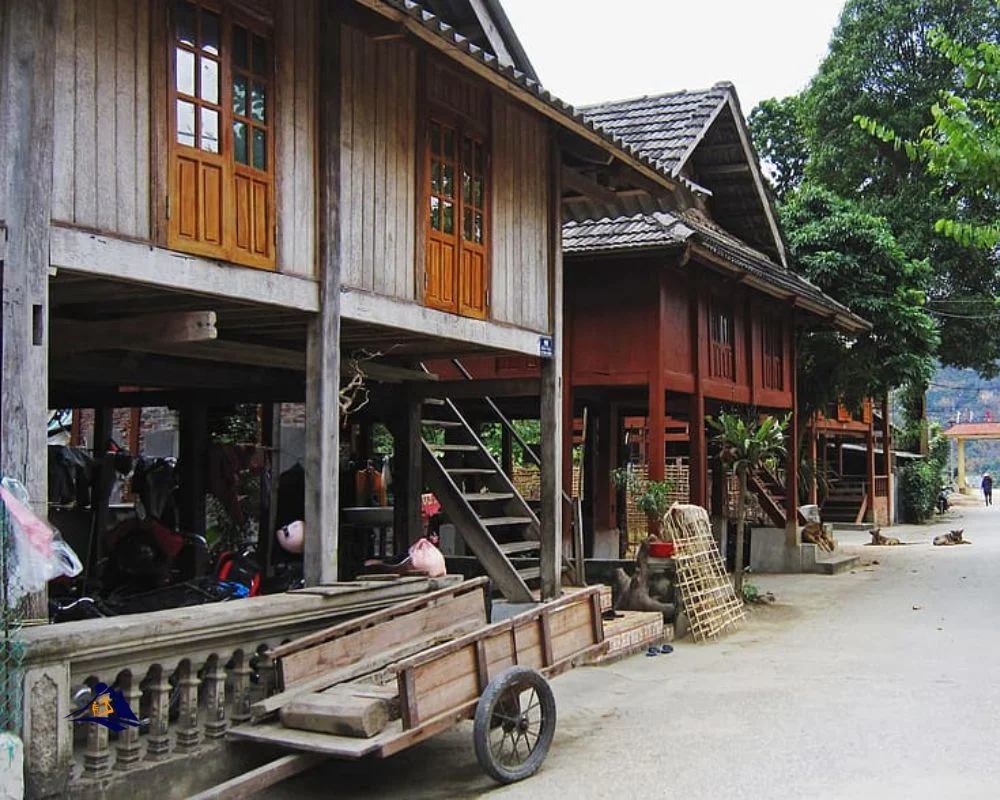
By keeping these factors in mind when planning your trip to Sapa rice fields in April, you’ll be able to fully enjoy the natural beauty without any worry or stress about accommodations and transportation options. Additionally, supporting local communities is also an important aspect of visiting this area as it helps sustain their way of life while preserving the stunning landscapes for future generations to enjoy.
Supporting Local Communities
Now that you have your accommodations and transportation settled, it’s time to think about how you can support the local communities during your visit to the Sapa rice fields in April. Sustainable tourism is all about community empowerment, so it’s important to be mindful of how your actions can positively impact those who live and work in these areas.
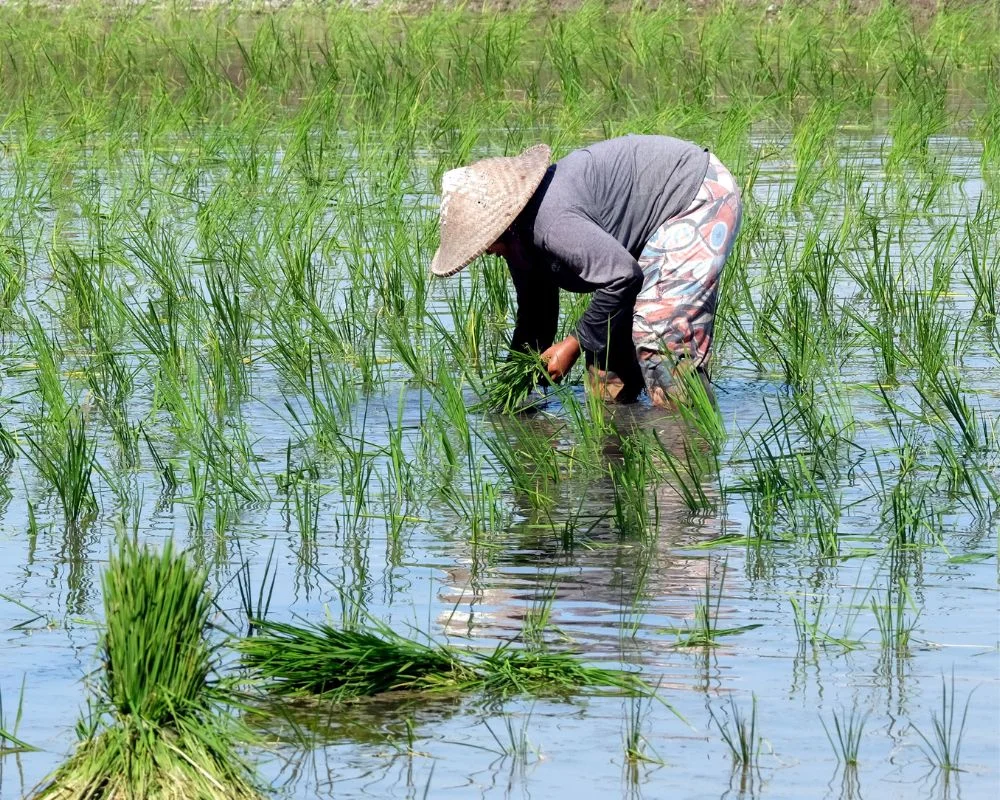
One way to support the local communities is by engaging in responsible tourism practices. This means being respectful of cultural traditions, minimizing environmental impact, and supporting local businesses through purchases and donations. By doing so, you can help create a sustainable economy that benefits everyone involved – from farmers to tour guides. Additionally, consider volunteering with local organizations or participating in cultural activities hosted by community members. Not only will this provide a unique experience for you as a traveler, but it also allows for meaningful interactions with locals while helping support their livelihoods.
Sapa Rice Fields In April Frequently Asked Questions
What is the history behind the Sapa rice fields?
If you’re curious about the history behind terraced landscapes like the sapa rice fields, you’ll be fascinated to learn that they are a result of Indigenous practices that have been passed down through generations. These practices involve using natural resources in a sustainable manner and working with the land to maximize crop yields. The construction of terraces allows for efficient use of water and soil. This technique has been used for centuries around the world, from ancient China to South America. It is an important part of our agricultural heritage, showcasing how humans can work in harmony with nature to create beautiful and productive landscapes.
Are there any traditional ceremonies or festivals that take place in the area?
You may be surprised to learn that the Sapa rice fields are not just a scenic destination, but also a hub of traditional customs and cultural celebrations. The local Hmong and Dao ethnic groups hold various festivals throughout the year, showcasing their vibrant costumes, music, and dance. One such festival is the “Gau Tao” festival in January, where young men and women gather to find potential partners for marriage. Another popular event is the “Roong Pooc” festival in March/April, which marks the beginning of a new agricultural cycle with offerings made to ancestors for good harvests. And while you’re here, don’t forget to explore the local cuisine at bustling markets filled with colorful produce and exotic spices. So if you’re looking for a unique cultural experience amidst stunning natural beauty, Sapa should definitely be on your list!
How do the local farmers maintain and harvest the rice fields?
To maintain and harvest the rice fields, local farmers in the area have developed a variety of irrigation techniques that are tailored to the different rice varieties grown in the region. The process begins with preparing the soil by plowing and leveling it, after which water is carefully introduced to ensure optimal planting conditions. Farmers then transplant seedlings into the flooded paddies and monitor their growth over several months. During this time, they must manage pests and diseases while also ensuring adequate water levels for each type of rice. Finally, when the grain has ripened, farmers drain the fields and begin harvesting by hand or using machines. Overall, their expertise in managing these delicate ecosystems allows them to produce high-quality rice while preserving traditional agricultural practices.
What wildlife can be found in and around the rice fields?
If you’re looking for a wildlife observation adventure, the rice fields in Sapa are a great place to start. Conservation efforts have helped preserve many species in and around the area, including birds like the white-throated kingfisher and red junglefowl, as well as mammals such as the Chinese pangolin and Indian muntjac deer. In fact, recent studies show that over 200 different bird species can be found in rice fields alone! With such rich biodiversity, it’s easy to see why these fields are so important to conservationists. So next time you visit Sapa, take some time to appreciate the natural beauty of these stunning landscapes and all they have to offer.
How has tourism affected the local community and economy?
Tourism has had a significant impact on the local community and economy in the area surrounding the Sapa rice fields. While it has brought an influx of visitors and revenue to local businesses, it has also led to issues such as overcrowding and environmental degradation. The dependence on tourism has caused some local businesses to become overly reliant on seasonal visitors, leading to economic instability during low tourist seasons. To combat this, many are working towards sustainable tourism practices that focus on preserving the natural beauty of the area while still providing opportunities for visitors to experience its unique culture and traditions. Despite these challenges, tourism remains a vital source of income for many in the area, allowing them to support their families and improve their quality of life.
Conclusion
Congratulations on discovering the enchanting beauty of Sapa rice fields! From exploring local culture to hiking through terraces, you’ve experienced a peaceful escape from city life. The best time to visit is in April when the rice paddies are lush and green, creating picturesque landscapes perfect for photography opportunities.
It’s important to note that by supporting local communities through your accommodations and transportation choices, you’re contributing to sustainable tourism efforts in the area. According to a recent study by Oxford Economics, sustainable tourism can create economic benefits for local communities while also preserving natural and cultural resources.
By choosing eco-friendly options such as homestays or locally-owned hotels and using public transportation or hiring a local guide instead of renting a private car, you can reduce your environmental impact while also supporting the livelihoods of those who call Sapa home. So next time you plan a vacation, consider visiting these stunning rice fields and making responsible travel choices along the way.
Sapa 1 Day Tours

- 1 day experience
- Moderate to challenging
- Cultural immersion & active adventure
- Rice fields, valleys & villages
- Private tours
- Vegan-friendly
Sapa 2 Day Tours

- 2 days 1 night experience
- Moderate to challenging
- Cultural immersion & active adventure
- Mountains, valleys, rice fields and villages
- Private tours
- Vegan-friendly
Sapa 3 Day Tours

- 3 days 2 night experience
- Moderate to challenging
- Cultural immersion & active adventure
- Mountains, valley, rice fields & villages
- Private tours
- Vegan-friendly
Sapa 4 Day Tours

- 4 days 3 night experience
- Moderate to challenging
- Cultural immersion & active adventure
- Mountains, valleys, rice fields & villages
- Private tours – Less Touristic
- Vegan-friendly
